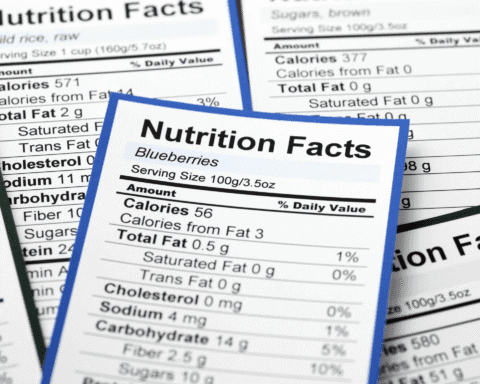Navigating the world of sugar substitutes can be overwhelming, given the variety available and the health considerations associated with them. From natural options like stevia and monk fruit to more synthetic alternatives like aspartame and sucralose, each has its unique characteristics and potential health impacts. Understanding the benefits and drawbacks of these substitutes can help individuals make more informed choices about their dietary habits.

Many people turn to sugar substitutes as a way to reduce calorie intake or manage blood sugar levels. Some substitutes boast low or zero calories, which can be particularly appealing to those looking to lose weight or maintain a healthier lifestyle. Yet, it’s essential to weigh these benefits against any potential health concerns, such as gastrointestinal issues or allergic reactions that certain substitutes might pose.
Nutritionists often emphasize the importance of moderation and individual response to different substitutes. Each person may react differently, and what works for one might not be suitable for another. By exploring the characteristics and implications of these sweeteners, readers can better assess what aligns with their health goals and needs.
Understanding Sugar Substitutes

Sugar substitutes offer a variety of options for those looking to reduce sugar consumption. They play a significant role in dietary management, especially for individuals with diabetes.
Types of Sugar Substitutes
Sugar substitutes can be classified into artificial sweeteners, sugar alcohols, and natural sweeteners. Artificial sweeteners like aspartame and sucralose are synthetic and extremely sweet compared to sugar. They contain little or no calories. Sugar alcohols, such as xylitol and erythritol, are naturally found in some fruits and are often used in sugar-free goods. They contain fewer calories than regular sugar but can cause digestive issues if consumed in large amounts. Natural sweeteners include products like honey, stevia, and agave syrup. Stevia, derived from the leaves of the stevia plant, is favored for its zero-calorie content and minimal impact on blood sugar levels.
The Role of Sugar Alternatives in Diabetes Management
For those managing diabetes, sugar substitutes can be essential. They help control blood glucose levels by offering sweetness without the calories and carbohydrate content that impact blood sugar. Type 2 diabetes patients benefit from these substitutes as they assist in maintaining a balanced diet without causing spikes in blood sugar. Stevia and artificial sweeteners are often recommended since they do not increase blood sugar levels. It’s vital for individuals to consult healthcare providers to determine the most appropriate sugar alternatives according to their specific health needs and preferences.
Health Effects of Sugar Substitutes

Sugar substitutes are often marketed as healthier alternatives to sugar. They can affect weight management, cardiovascular health, and blood sugar levels. Each of these areas is influenced differently depending on the type of sugar substitute used.
Weight Management Implications
Using sugar substitutes is often promoted as a strategy for weight control. People might use them to reduce calorie intake, which can help prevent weight gain or obesity. Some studies suggest that replacing sugar with low-calorie sweeteners might indeed assist in weight management by lowering daily energy consumption.
However, some research indicates that certain sugar substitutes could lead to increased cravings or greater appetite, possibly resulting in paradoxical weight gain. Thus, while sugar substitutes could aid in managing weight, they should be chosen and used carefully. It’s crucial to understand that these substitutes alone do not guarantee weight loss.
Cardiovascular Health
Regarding cardiovascular health, sugar substitutes are viewed as a means to lower the risk of heart disease by reducing daily sugar consumption. Yet, the direct relationship between these substitutes and heart-related issues like heart attacks or strokes remains under scrutiny.
Some evidence suggests that particular substitutes might be linked to changes in cholesterol or triglyceride levels, which are important factors in heart health. Although sugar substitutes provide an option for reducing sugar intake linked to heart disease, users should remain cautious and consult healthcare providers for personal advice.
Blood Sugar and Insulin Response
Sugar substitutes are touted for their potential benefits in managing blood sugar levels. Unlike regular sugar, many substitutes have little or no effect on blood glucose levels, making them a popular choice for individuals with diabetes. These substitutes often have a low glycemic index, meaning they don’t cause rapid spikes in blood sugar.
Stevia and aspartame are examples of sweeteners that do not significantly raise blood glucose or insulin levels. Though they can be beneficial in controlling blood sugar, it’s important for consumers, especially those with diabetes, to monitor their overall diet and consult with healthcare professionals regarding their use.
Regulatory Perspective on Sugar Alternatives

The use of sugar substitutes involves specific regulatory processes and guidelines to ensure safety. The U.S. Food and Drug Administration (FDA) plays a central role in evaluating and approving these alternatives, focusing on consumer safety and proper labeling.
FDA Approval Process
Sugar substitutes must undergo a rigorous review by the FDA to be approved for use. This involves extensive testing and scientific analysis to assess safety and potential health impacts. The FDA approval process includes analyzing studies on the metabolism and potential toxicity of substances.
Once these evaluations are complete, an alternative can be classified as “Generally Recognized as Safe” (GRAS) or be subject to additional regulation. GRAS status indicates consensus among experts about the safety of a substance under usual conditions of use.
Labeling and Consumption Guidelines
Labeling sugar substitutes accurately is essential for transparent consumer information. The FDA mandates clear identification of sugar alternatives on product labels, ensuring consumers are informed of ingredients. In the U.S., terms like “no added sugars” or “sugar-free” have specific definitions, tied to these guidelines.
Consumption guidelines provided by the FDA aid consumers in safe usage levels. The FDA establishes acceptable daily intakes (ADIs) for substitutes, reflecting the amount a person can consume daily over a lifetime without appreciable health risk. These guidelines are designed to support informed choices and manage consumption proportions responsibly.
Practical Tips for Using Sugar Substitutes

Incorporating sugar substitutes into daily routines can reduce refined sugar intake and help manage cravings. They offer versatility in both meal planning and cooking.
Meal Planning with Sugar Alternatives
Using sugar substitutes, like stevia or erythritol, in meals can satisfy sweet cravings without excess calories. Planning meals with these alternatives involves assessing each dish for flavor balance. Many substitutes are sweeter than sugar, so adjustments to the amount used may be necessary.
A small amount of a sweeter substitute can enhance dishes without overpowering them. For instance, adding a tablespoon of monk fruit sweetener to a smoothie or oatmeal can provide sweetness and maintain nutritional balance. For savory dishes that may require a touch of sweetness, liquid stevia drops can be a convenient addition.
When selecting sugar substitutes, it’s important to consider personal preferences and dietary needs, as different products have varying calorie contents and effects on blood sugar levels. Testing a few alternatives during meal preparation can help determine which ones align with individual taste and health goals.
Baking and Cooking with Sugar Replacements
Baking with sugar substitutes requires understanding their properties, as they don’t always caramelize or provide the same moisture as refined sugar. Erythritol and xylitol are often preferred because they can mimic the bulk and texture of sugar in baked goods like cookies or cakes. It might be necessary to adjust baking times or temperatures.
A mixture of sugar substitutes can be beneficial. Combining a high-intensity sweetener, like stevia, with a bulking agent, like inulin, can yield better results in terms of texture and taste. In cooking, incorporating substitutes in sauces or dressings offers a lighter meal option.
Liquid alternatives, such as agave nectar, can be used in marinades or glazes. They blend seamlessly with other ingredients, bringing a balanced sweetness to the recipe. It’s crucial to keep a keen eye on taste adjustments, as each alternative has different concentration levels.
Alternatives to Processed Sugar Substitutes

Exploring alternatives to processed sugar substitutes involves understanding the unique properties of natural sweeteners like honey, maple syrup, and agave, as well as using whole foods to add sweetness without relying on refined products.
Natural Sweeteners and Their Properties
Natural sweeteners provide an array of flavors and nutritional benefits not typically found in processed substitutes. Honey, for example, contains trace vitamins and minerals and has antimicrobial properties. It is sweeter than table sugar, requiring less for the same level of sweetness.
Maple syrup is another option, known for its robust flavor and unique antioxidant compounds. While it contains fewer calories than honey, it still offers some essential nutrients, such as manganese and zinc.
Agave syrup has gained attention for its low glycemic index compared to other sweeteners. It is primarily composed of fructose, which makes it a potent sweetener requiring small amounts for effective flavor enhancement. Considerations for using these natural options include their caloric content and impact on blood sugar levels. Each sweetener’s unique profile can complement specific culinary uses, allowing for creative experimentation.
Incorporating Whole Foods for Sweetness
Whole foods offer natural sweetness and nutritional richness. Incorporating fruits like bananas, dates, and apples can enhance sweetness while adding fiber and essential vitamins to recipes. These foods often work well in baking, smoothies, and snacks.
Bananas can serve as a sweetener in baked goods, providing moisture and a natural sweetness. Dates are rich in fiber, potassium, and natural sugars, making them ideal in smoothies or energy bars. Grated apples can be used to contribute both sweetness and texture to dishes like oatmeal or muffins.
This approach not only reduces reliance on processed sugars but also adds nutritional value. Emphasizing whole foods transforms sweetness into an opportunity to boost health and enjoy diverse flavors.







